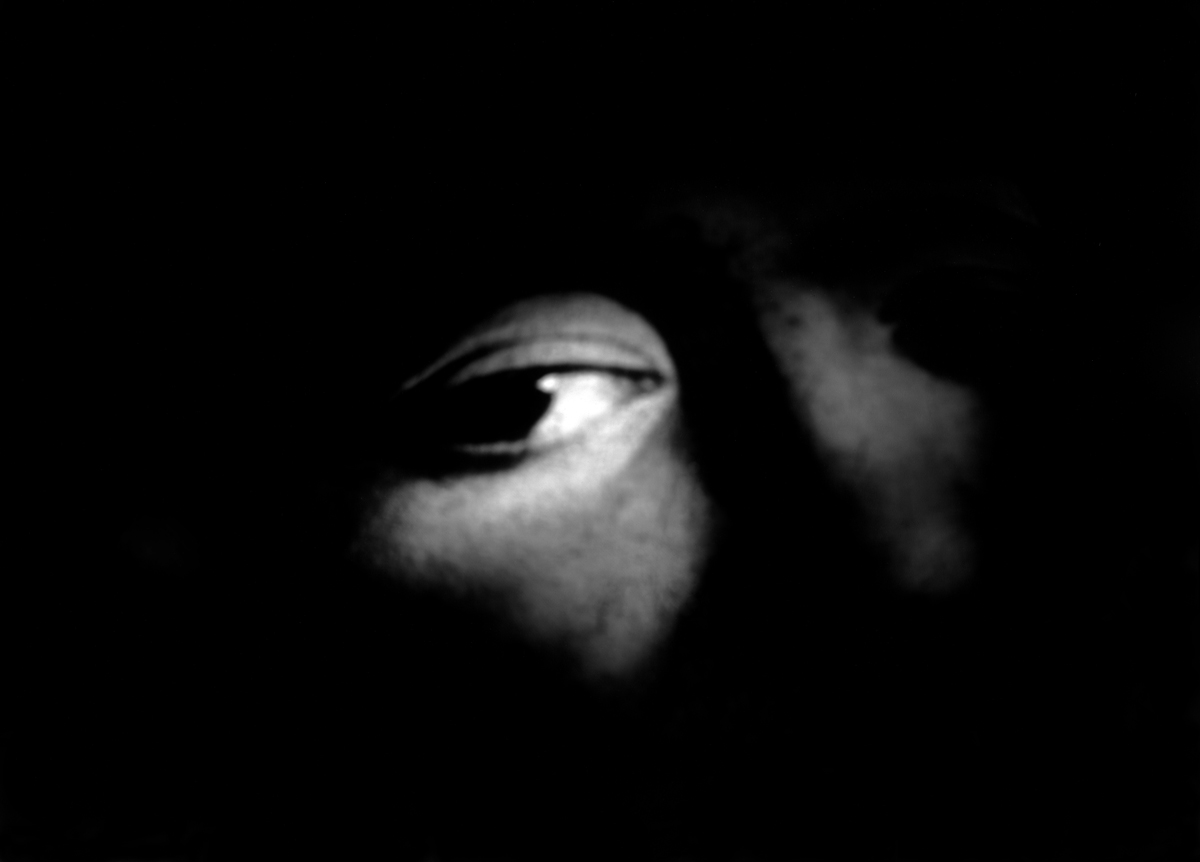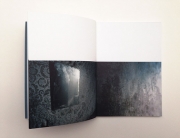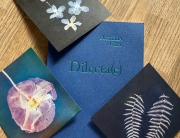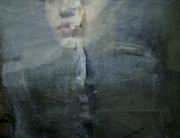Description du projet
THROUGH THE DARK FOREST By Lupe Nunez-Fernandez Critique d’art pour la galerie Saatchi, Londres
Au milieu du chemin de notre vie je me retrouvais par une forêt obscure car la voie droite était perdue. Ah dire ce qu’elle était chose dure cette forêt féroce et âpre et forte qui ranime la peur dans la pensée. La Divine Comédie Dante Ainsi commence le long voyage de Dante, sa douloureuse initiation au travers des Enfers. Ici, c’est aussi d’un voyage qu’il s’agit, voyage dans la peinture des grands maîtres : Titien, Michel-Ange, Caravage… Au coeur de ce parcours se dévoile une exploration de la matière photographique et picturale. Cette découverte passe par un support que je privilégie, le sténopé. Derrière un miroir déformant, apparaissent ainsi au milieu des ténèbres des figures fantasmagoriques, bestiaire fantastique, visages distendus par un invisible supplice : parade macabre figée dans le silence.
The nuanced relationship between theatricality and space is explored in Aurelia Frey black and white photographs of faces and abstracted natural settings. In a series entitled ‘Through the dark forest’, the young French photographer presents a cast of characters straight of a crystal ball – though contemplated by the viewer, they themselves seem to be haunted by the act of looking, caught in a world of abstract darkness that is half film-noir drama, half nightmarish reverie. But there’s a calmness that runs through these personages’ expressions – as if they had rehearsed it all in front of a reflecting window, or as if they were preparing their own film-still takes, as if they were acting out a plot they cannot change, looking slightly askance through a mirror that simply, immediately changes what’s normal into a play. If there could ever be frank portraiture of fairies, this is what it might look like, partial, vivid, slightly paranoid of being found out. The perfect foil to these masks are the forests whose misty, placid and slightly amorphous nature Frey candidly captures, as richly as if she lived in them. Or, if you will forgive my own personal projections, could they the metaphoric settings for the theatre of torn expressions we saw above?






